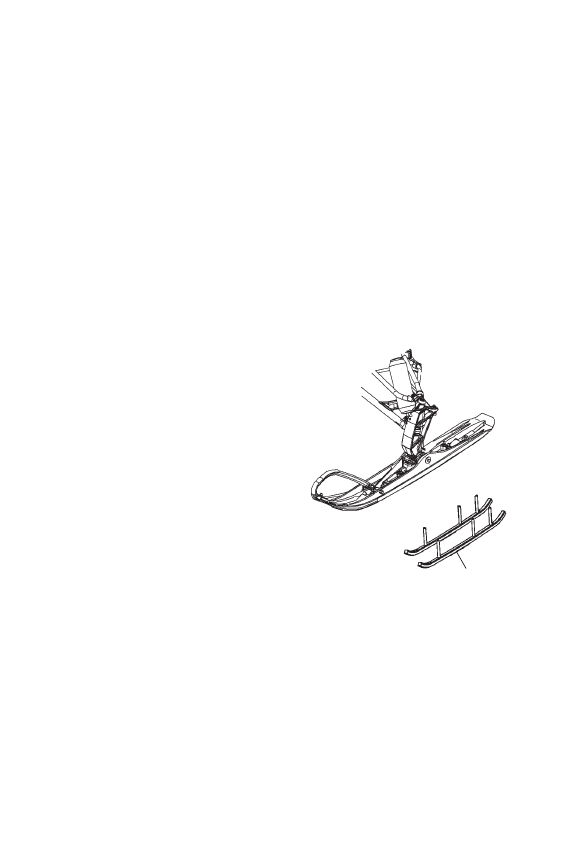Snowmobile Polaris 600 IQ LXT (2015 year). Manual - part 28

115
MAINTENANCE
Steering System
Ski Skags
WARNING! Worn skis and/or skags will adversely affect handling. Loss of
vehicle control may result, causing serious injury or death. See your dealer's
studding chart for recommended skags. If you install longer or more aggressive
carbide skags than the original equipment, it may also be necessary to add track
studs to maintain proper vehicle control while turning on hard-packed snow or
ice.
Check skags before each use of the snowmobile to ensure positive
steering characteristics. Skags must be replaced when worn to half their
original diameter.
Tip: Carbide skags must be replaced if any abnormal wear or chipping is found.
Skag Replacement
Some models are equipped with single skags. Some models are
equipped with dual skags.
1. Raise and support the front of
the snowmobile so the skis are
approximately 6" (15 cm) from
the ground.
2. Remove the attaching nuts and
pry the skag downward.
3. Remove the front end of the
skag.
4. Remove the rear end of the
skag.
5. Reverse the steps to install a
skag.
Skag